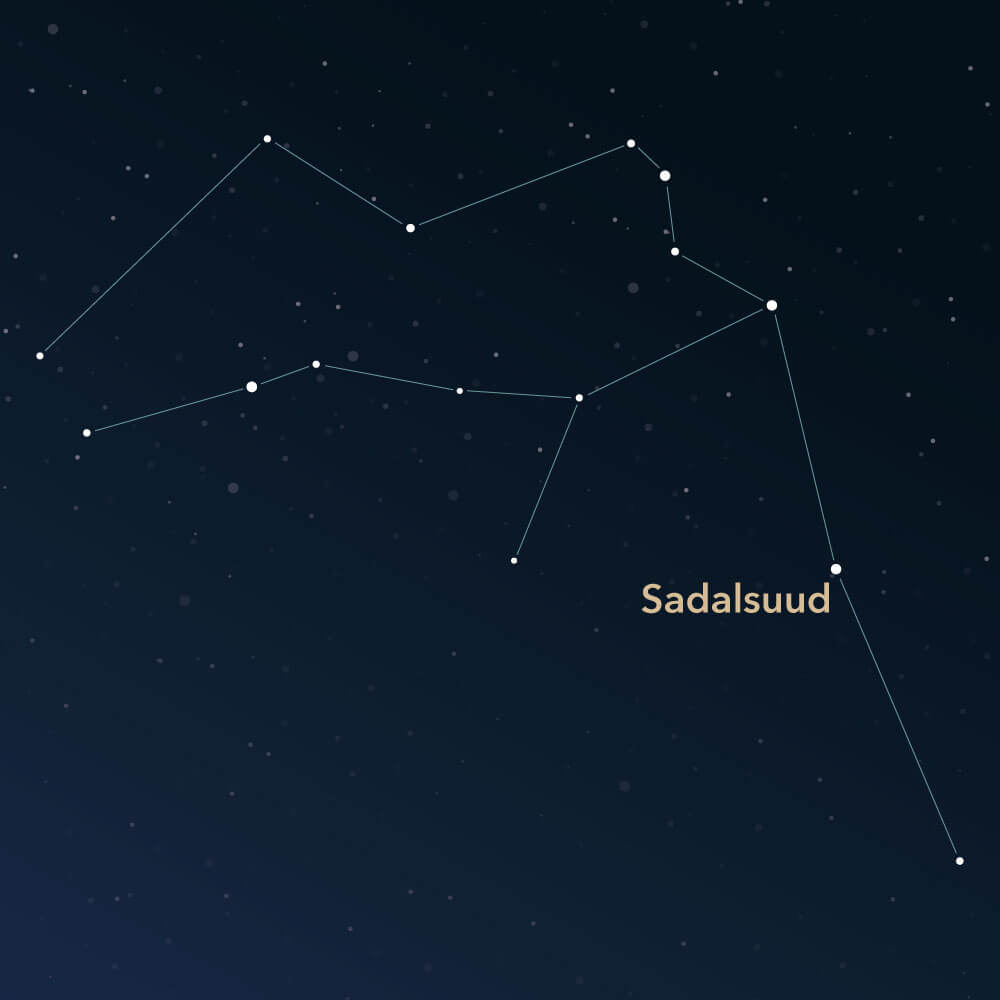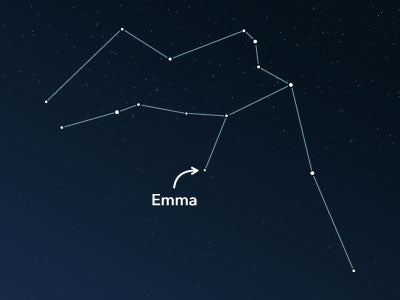The constellation Aquarius
Características
- Nome latino
- Aquarius
- Hemisfério
- Ambos os Hemisférios
- Visibilidade
- August - November
- Área
- 980 deg²
- Estrela mais brilhante
- Sadalsuud (HIP number 106278)
- Especialidades
- Galaxies, globular clusters, planetary nebulae

The constellation Aquarius, Latin for Water-Bearer, is one of the oldest known constellations in the night sky. The zodiac sign of the same name is one of the 12 astrological signs that have great importance in western astrology today. Although Aquarius is not particularly prominent, it contains some interesting deep-sky objects.
Hemisphere, visibility, and area
Aquarius is a constellation located on the celestial equator and can therefore be observed from many places. It is visible between latitudes 65° N and 87° S, so it can be observed almost up to the Arctic Circle in the northern hemisphere and extends far into the Antarctic in the southern hemisphere. The best time to watch the constellation is between August and November.
The constellation lies on the ecliptic and is primarily known for the astrological sign Aquarius. Every year at the same time, the sun passes through the constellation. In today's time, this is between February 16 and March 21. During this time, the constellation cannot be observed as it rises and sets with the sun.
When the astrological signs were determined thousands of years ago, the sun passed through the constellation about a month earlier. However, due to the precession of the earth, this has shifted over time. Nevertheless, the zodiac signs are still determined based on the time back then in astrology. Therefore, living beings born between January 21 and February 19 have the zodiac sign Aquarius.
Aquarius covers an area of 980 square degrees in the sky, making it one of the ten largest constellations in the entire night sky. However, it is not particularly prominent and not easy to find.
Only two stars have an apparent magnitude brighter than 3. The brighter of the two and thus the most shining star in Aquarius is Sadalsuud (Latin: β Aquarii, Beta Aquarii). It has an apparent magnitude of approximately 2.9 and is located about 550 light-years from earth.
There are two ways to make the search for the constellation easier. Since it is a constellation on the ecliptic, other planets and the moon also regularly pass through Aquarius. The position of the moon can be predicted precisely, so it is helpful to check on which nights the moon passes through Aquarius.
Furthermore, it is useful to look for well-known neighboring constellations. Along the ecliptic, the constellations Pisces and Capricornus are adjacent to Aquarius in the west and east, respectively. The constellations Pegasus, Equuleus, Delphinus, and Aquila are also in the immediate vicinity. The Piscis Austrinus, Sculptor, and Cetus border Aquarius to the south.
Specialties in the constellation
Aquarius contains several exciting objects for observation, two of which are the globular cluster NGC 7089 and the planetary nebula NGC 7009.
The galactic globular cluster NGC 7089, also known as M2 (Messier 2), is the brightest object. It has an apparent magnitude of around 6.4 and can be observed with a pair of binoculars. Here, it appears as a hazy spot. Its distance from our solar system is about 50,000 light-years.
In September 1782, the German-British astronomer William Herschel discovered the planetary nebula NGC 7009, also known as the Saturn Nebula. It can be observed with a small telescope.

Mythology
The constellation Aquarius is associated with two figures from Greek mythology.
One is said to reflect the image of Ganymede, the most beautiful man on earth. When Zeus laid eyes on the young boy during a visit to earth, he was struck by Cupid's arrow. He abducted the Trojan prince to Olympus, where he granted him immortality and made him work as the Water-Bearer, serving the gods.
Another story speaks of Deucalion, who survived a flood caused by Zeus with his wife by building a boat beforehand. As the only humans left on earth, they became the ancestors of humanity by throwing stones over their shoulders, from which young people grew.
PublicadoLeia mais artigos interessantes

An overview of all 88 constellations
Learn more about all 88 constellations and read interesting information about the mythology, visibility, and features.

Aplicativo Planetário
Descubra o céu noturno com nosso aplicativo de planetário!
Disponível para iOS e Android.

Nomeie uma estrela na constelação Water-Bearer
Name a star in a constellation and create something that lasts for eternity.